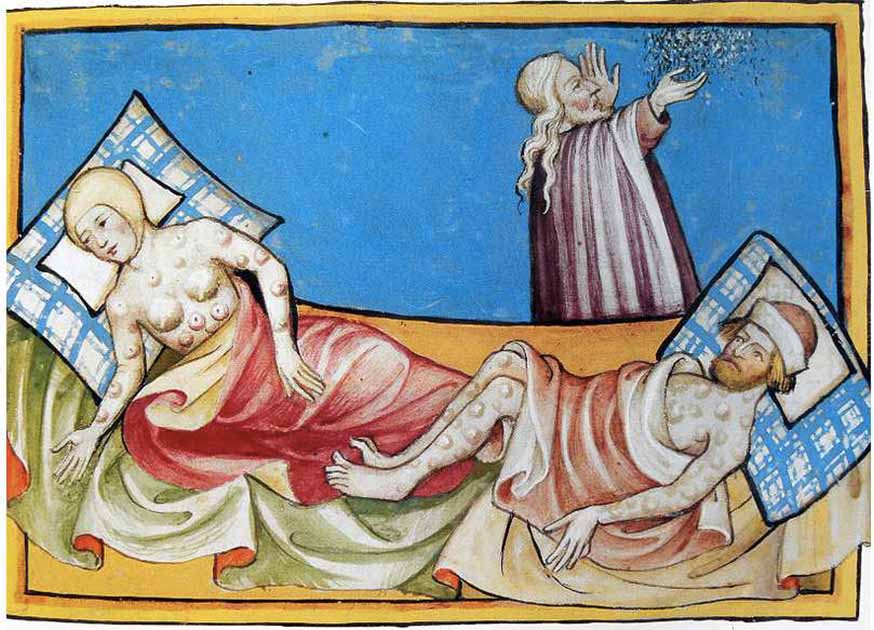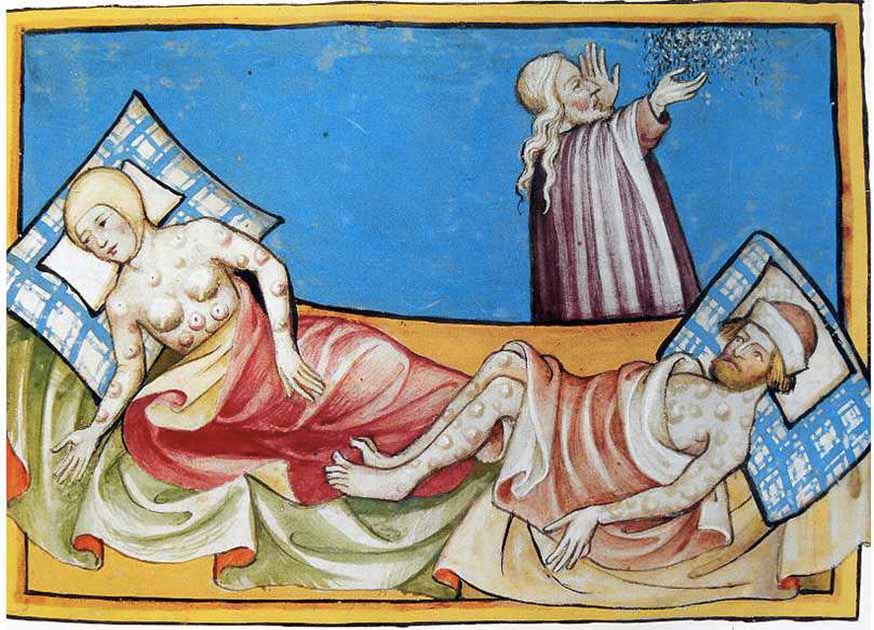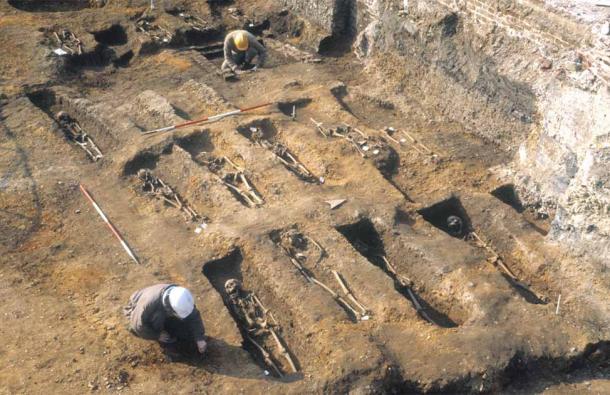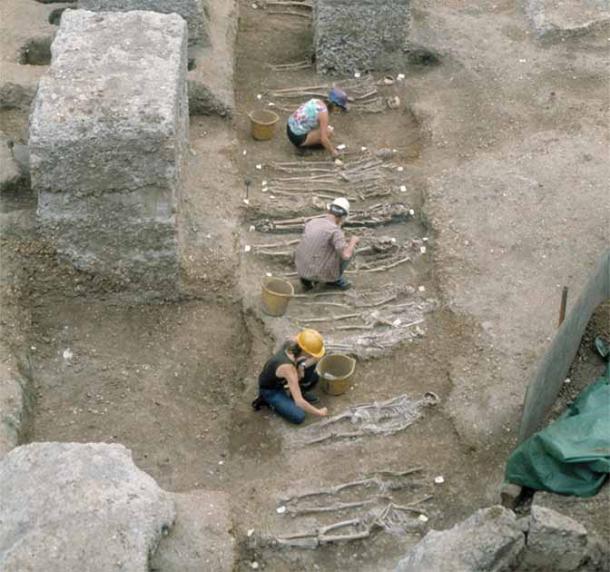

We may have a lot more to thank (or curse) our ancestors for than we realize. When the Black Death or the bubonic plague swept through Europe 700 years ago, it literally killed 50% of the population. A fabulous new study which analyzed the DNA of these medieval skeletons from the 1300s has found certain mutations that helped people survive the plague, which are linked to certain autoimmune diseases affecting people even today.
ERAP2 and the Black Death: A Gene with Higher Rates of Survival?
The Nature study highlighted how survivors of the plague had a “good” variant of a particular gene called ERAP2, which contributed to much higher rates of survival. The plague is believed to have driven the strongest pulse of natural selection yet measured in humans, while wiping out over 200 million people. The study set out with the purpose of identifying which of the survivors carried a mutation, or mutations, in their genome, that protected them from the disease.
Luis Barreiro, professor of genetic medicine at the University of Chicago Medical Center in the US and co-senior author of the study, said: “This is, to my knowledge, the first demonstration that indeed, the Black Death was an important selective pressure to the evolution of the human immune system.”
The evolution of ERAP2 has been linked to how humans respond to disease today. For example, an autoimmune disease like Crohn’s, rheumatoid arthritis, or lupus. Unfortunately, those who have inherited the plague-resistant mutations run a higher risk of autoimmune diseases, wherein the immune system ends up attacking the healthy tissues within the body. Essentially, our genetic makeup today is a reflection of the entirety of our evolutionary history as humans.

Using DNA extracted from teeth of people who died before and during the Black Death pandemic, researchers were able to identify genetic differences that dictated who survived and who died from the virus. (Matt Clarke / McMaster University)
The Science Behind the Black Death Mutations
In layman terms, the gene focuses on making the proteins that bolster immunity by cutting down to size invasive microbes, showing these fragments to the immune system. This filtration system of sorts helps the immune system to effectively recognize the alien microbe, making neutralization easier. People who carry the ERAP2 mutation can likely kill invading pathogens more quickly than those without the mutation.
It comes in two variants, with a lot of ERAP2 genes doing nothing, and a lot working well, with a copy from each parent. The survivors inherited a high-functioning version from both parents, had children, and thus passed on these helpful mutations to successors. Over time, the presence of this gene rapidly increased in the gene pool.

Researchers extracted DNA from the remains of people buried in the East Smithfield plague pits, which were used for mass burials in 1348 and 1349. (Museum of London Archaeology / MOLA)
Black Death: Analyzing DNA and Covid-19 Comparisons
The scientists analyzed DNA taken from the teeth of 206 ancient skeletons, and were successfully able to isolate and date the human remains to before, during or after the Black Death, according to a BBC report. This included bones from the East Smithfield plague pits used for mass burials in London, and a continuum of samples coming in from Denmark.
“So the king [Edward III], at the time, bought this piece of land and started digging it” explained geneticist Luis Barreiro at the University of Chicago. This cemetery, the East Smithfield, became a mass grave, where more than 700 people were buried together. “There’s basically layers and layers of bodies one on top of each other,” described Barreiro. The city shut down the cemetery when the outbreak ended.
However, with a disease like Covid-19, which killed off a huge percentage of the population that was no longer reproductively capable anyway, a similar legacy will not be left behind. This is because evolution works primarily through our ability to reproduce.

Researchers extracted DNA from the remains of people buried in the East Smithfield plague pits, which were used for mass burials in 1348 and 1349. (Courtesy: Museum of London Archaeology)
In a lab, scientists isolated the plague bacterium, yersinia pestis, which 700 years ago had travelled though fleas on black rats that were on Genoese ships. After coming ashore, the Black Death mainly spread person-to-person as pneumonic plague, leading to such a rapid spread of the pandemic. Those with helpful mutations were able to survive the plague, whilst those without these mutations lost their lives in most scenarios.
Compared to Covid-19, which has a mortality rate of 0.03 to 0.05%, the bubonic plague had a mortality rate of between 30 to 50%! One of these mutations led to a 40% survival advantage as the strongest selective fitness effect ever estimated in humans, as per Professor Barreiro, who was quoted in an NPR report.
This is by far the biggest evolutionary advantage ever recorded in humans – and this was lightning fast, arising over a few decades. Prior to this comprehensive study, the biggest evolutionary advantage and strongest example of natural selection ever recorded in human beings was lactose intolerance in Europeans. This evolved over thousands of years and offered only a few percentage points in terms of survival.
The new study comes with a big limitation, by focusing only on Londoners and those who were residing in Denmark at the time. However, the bubonic plague had affected huge swathes of population across Asia and North Africa too, along with the rest of Europe. This has the potential to also reinforce racist misconceptions about European immunity (in terms of superiority). It requires a much larger pool of affected people to expand the scope of this study, and avoid leaving it open to misinterpretation.